Out of all of Sonic’s 90s offerings, Sonic Triple Trouble is probably the most under-appreciated. Featuring some of the best levels, bosses, and music outside of the series’ core offerings, Triple Trouble is the apex of Sonic’s 8-bit entries. It built on the unique quirks of those games, while also coming the closest out of all of them to matching Sonic’s 16-bit releases. This makes it all the more frustrating that the game hasn’t seen an accessible re-release since it hit the 3DS eShop 8 years ago. Hopefully, this will be corrected soon, but until then, we’re set to get something much better: Sonic Triple Trouble 16-bit.
Before I go any further, I want to give you a warning: there will be spoilers in this preview. This may be a fan game, but there are some fun surprises for fans of the original that may be best experienced first hand. If you don’t mind that, read on!
When I first heard about this fan game, I figured it was going to be a straight up graphical remake of the original. So I was surprised when I booted up the demo and was greeted with text narration…followed by a recap of the ending of Sonic 3 & Knuckles, and then cutscenes and brief tutorial explicitly reframing Triple Trouble as a direct follow-up to to that game. This wasn’t just 16-bit Triple Trouble, this was “Triple Trouble if it was on the Genesis, and also Sonic 4.” And that’s basically this entire game in a nutshell. It’s a complete overhaul of the original game, featuring brand new levels and music created by the game’s lead designer, Noah Copeland, as well as superb 16-bit pixel art from a team of artists known for their work on Sonic Time Twisted.

I don’t use the name “Sonic 4” lightly, either: this game is a LOT of fun. Sonic and Tails control exactly as they should, and moves like the drop dash and buddy flight feel great to pull off. The game even includes a move exclusive to the original Triple Trouble: the strike dash, which is basically a super peel out that starts with a moment of invincibility. Sonic and Tails are controlled simultaneously, much like in Sonic Mania’s encore mode. Also like Mania’s encore mode, there’s no mechanical reason to switch between characters, but I definitely prefer the convenience of it versus character-specific playthroughs. All together, moving through this game’s levels is superb.
The levels, likewise, would feel right at home in an official Sonic game: they are big, multi-tiered, and have fun traversal gimmicks that make them a blast to run through. The two levels on display, Great Turquoise and Meta Junglira, have all the right visual cues and level gimmicks to invoke the source material. Great Turquoise still has its bouncy palm trees, and Meta Junglira still has its weird bouncy floating bubbles, barrel cannons and hollow tree logs (among many other things, that level has a lot of gimmicks). But this game doesn’t just stop with what it took from its source material: like any good remake, it built on them.
Great Turquoise, which was a pretty basic level in the original, gets a lot of new additions: there are now lots of breakable walls, pulleys that send Sonic to new paths, geysers that launch platforms into the air, and flowers that blast Sonic through the level. All of these gimmicks are introduced gradually through Great Turquoise’s two acts and work quite well together, making this level feel much more dynamic then it did in the original.
The game has also redesigned and recontextualized the bosses and emerald collecting into something that’s a lot more fun. If there was any low point in the original Triple Trouble, it’s the games special stages, which were either okay ring collecting mini games or frustratingly designed timed platforming levels. Triple Trouble 16-bit solves this problem by redesigning the special stages entirely: players now race Fang through pseudo 3D obstacle courses filled with power-ups, bombs and rings for the chaos emeralds. The one special stage available in the demo was quite a bit of fun, and actually lets players sacrifice a life to retry if they lose.

The Fang boss fights that once sat at the end of the special stages are now act 1 boss fights in the main game. They are a bit more difficult then the battles in the original, but are otherwise quite similar. It’s Great Turquoise’s two-stage turtle boss fight that really changes things up: while the first phase of the fight plays out just like it did in the original, the second phase escalates things considerably, making it a far superior battle in the process.
For as much as this game tries to improve and build on its source material, it’s pretty restrained in terms of its graphics and music. The team’s goal was to make something that looked like it could work within the limitations of the Genesis, and they definitely succeeded. The game even displays in 4:3 aspect ratio, hence why all the screenshots here have black bars. Everything looks and sounds like it could work on a Genesis, which is a level of authenticity I appreciate. The soundtrack especially is a highlight for me: the original Triple Trouble’s soundtrack is one of my favorite classic Sonic soundtracks, and the 16-bit flourishes Copeland has added work really well.
Really, there is very little for me to nitpick in this demo: it does what it sets out to do superbly. While this demo is currently missing Triple Trouble’s unique power-ups, like Sonic’s jet boots and Tails’ Sea Fox, Copeland confirmed to us that these would eventually come to the game. The only thing from Triple Trouble that this game appears to be overlooking is Sonic’s ability to re-enter a jump spin after being struck by an enemy. Beyond that, the only feature I might like to see in a future update is some sort of art to fill in the black bars.
SAGE will apparently have well over 200 games this year. With so many games, what we spend our time on is pretty important. I can say, with absolute confidence, that your time will not be wasted with this demo. If you’re in the mood for a taste of a quality classic Sonic experience, check this thing out! I, for one, will be keeping a close eye on this project from now on. I can’t wait to see how Sunset Park is rendered, how Knuckles’ brief turn back to villainy is worked into the plot, and how certain 8-bit exclusive power-ups are brought into 16-bit. Here’s hoping this project makes it across the finish line one day!
Want to know more about Sonic Triple Trouble 16-bit? Check out our interview with the developer here.


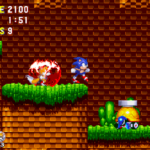
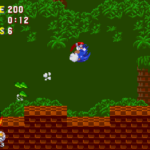

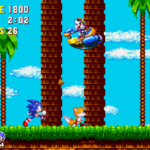
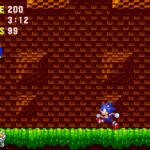
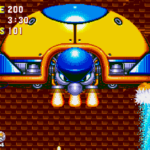
This looks great, I like that people still care about imitating hardware restrictions to create an ‘authentic’ experience. Even if they’re bound to break it one way or another.
It’s just too bad these fangames never make it to homebrew consoles, I’d love to play this on a CRT in 240p on my Wii, or have it be portable by playing it on 3DS.
The VC release is really good though, and at least it can still be bought, I’m reminded that despite having more features than other VC platforms, GG had a ridiculously vague setting called “Screen Performance” with the option of ‘Original’ or ‘Special’, and the manual being extremely redundant about it.
The setting just breaks the sprite limit, it’s such a neat feature hidden behind a nonsense name.